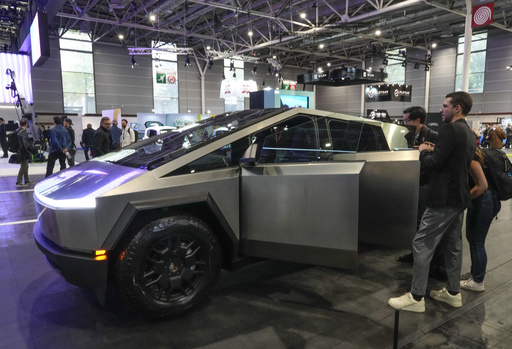The highly anticipated unveiling of Elon Musk’s “Cybercab” turned out to be a major letdown for investors.
Expectations were high that Tesla’s long-awaited robotaxi demonstration would deliver more than just flashy presentations, with investors hoping for substantial information and concrete plans. At Thursday’s event, held at Warner Bros. Studios in Los Angeles, Musk did showcase real vehicles and humanoid robots interacting with guests—an upgrade from the dancer dressed in a robot suit at Tesla’s “AI Day” three years ago. However, many analysts were left underwhelmed. Despite the spectacle, Musk’s big promises came with few specific details, reinforcing the concerns of Tesla skeptics who argue the company’s stock is significantly overvalued.
Rather than boosting Tesla’s stock, the robotaxi reveal ended up being a “sell the news” moment. Shares of Tesla plummeted by more than 9% on Friday morning, wiping out recent gains. Tesla stock has now fallen about 11% for the year, a stark contrast to the S&P 500’s gain of over 22%. Additionally, Tesla was recently ousted from the so-called “Magnificent Seven” — a group comprising America’s seven largest tech companies by market capitalization — and was replaced by semiconductor and software giant Broadcom.
Even prominent Tesla supporters like Dan Ives from Wedbush Securities expressed disappointment in the lack of detailed information on how Tesla plans to realize its autonomous vehicle ambitions. “That will naturally weigh on shares this morning as a knee-jerk reaction,” Ives and his colleagues noted in a statement. However, they added, “We strongly disagree with the notion that last night was a disappointment. Seeing the Cybercab in person and the massive improvements in the Optimus robot, which we interacted with throughout the evening, is cause for optimism.”
Musk has been clear that Tesla’s future depends on the successful rollout of autonomous vehicles. Both he and Tesla advocates believe that robotaxis could eventually push the company’s valuation to $5 trillion, up from its current market cap of around $700 billion.
Tesla’s strategy is to outpace competitors like Alphabet-owned Waymo, which already has autonomous vehicles operating on public roads. The key differentiator for Tesla is its goal to produce a more affordable autonomous vehicle that isn’t limited to specific geofenced areas. Seth Goldstein, an equity strategist at Morningstar and chair of its electric vehicle committee, recently told Fortune that Tesla aims to deliver a much cheaper alternative to Waymo’s $250,000 vehicles.
Musk revealed 20 Cybercab prototypes at the event, announcing a price point of under $30,000—a stark contrast to Waymo’s six-figure cost per vehicle. He also stated that the Cybercab would be ready for the market by 2027, but acknowledged his previous tendency to be “a little optimistic” with timelines. However, Musk provided no information on where the vehicle would be manufactured, leaving investors with more questions than answers.
The stock’s decline also had a direct impact on Musk’s personal wealth. As Tesla’s largest shareholder, with over 13% of the company, Musk saw his net worth decrease by $15 billion, bringing his fortune down to $240 billion. Despite this dip, he remains the wealthiest person in the world.
Ultimately, while the event featured impressive visuals, the lack of concrete plans for the Cybercab and vague details about its production left investors unconvinced, causing Tesla’s stock to tumble in the aftermath.



